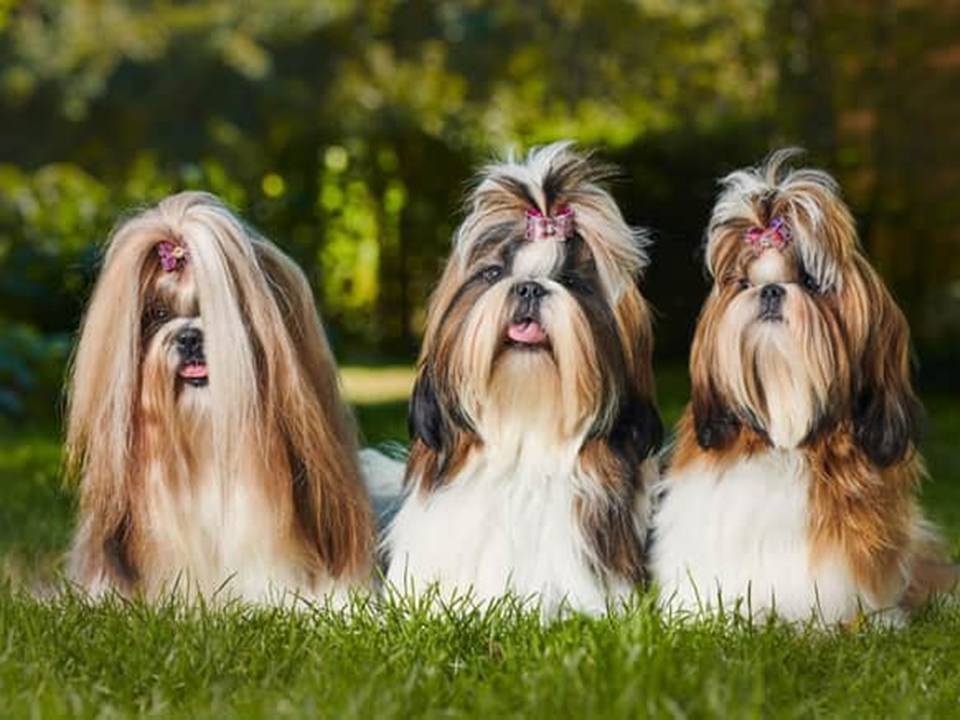The Shih Tzu: One of the Oldest Breeds in China
The Shih Tzu is one of the most recognizable toy dog breeds. People love it for its adorable looks and affectionate personality. This small dog has a luxurious coat and a lively expression. Its history goes back thousands of years, connecting it to ancient China and Tibet. Emperors and monks cherished the breed. The Shih Tzu’s story reflects a deep cultural link to royalty, spirituality, and companionship.
Ancient Origins in Tibet
The Shih Tzu’s story begins in the mountains of Tibet. There, people bred small, lion-like dogs and held them in high regard. Tibetan monks often bred dogs as temple companions. They believed these dogs had a spiritual role. The dogs symbolized the mythical lion, an important figure in Buddhist art and philosophy. Many called these small, long-haired dogs “lion dogs.”
One of the Shih Tzu’s closest ancestors is the Lhasa Apso. This breed also originated in Tibet. The Lhasa Apso served as a sentinel in monasteries. It looked similar to what would later become the Shih Tzu. Monks and Tibetan nobility likely gifted some of these prized dogs to Chinese royalty. This exchange helped shape the modern Shih Tzu.

The Role of Chinese Royalty
The Shih Tzu has Tibetan roots, but Chinese royalty refined its identity. The breed became especially popular in the imperial courts of the Ming and Qing Dynasties. During the Ming Dynasty (1368–1644), people brought these dogs to China as gifts. They quickly became beloved companions of Chinese emperors and their families.
Inside the Forbidden City, only the elite and royalty could enter. Here, the small dogs thrived. The emperors and empresses of the Qing Dynasty (1644–1912) particularly favoured them. The name “Shih Tzu” means “lion dog” in Mandarin Chinese. This name reflects the breed’s connection to lion imagery in both Chinese and Tibetan cultures.
Empress Dowager Cixi, a famous figure in Chinese history, loved dogs, especially the Shih Tzu. She bred them within the palace, creating specific lines. She ensured they remained small, elegant, and well-cared-for. Many historical paintings and accounts show her surrounded by these regal dogs. The Chinese emperors believed the Shih Tzu brought good fortune and protection. They treated the breed as a symbol of wealth and power. Breeding was highly controlled and restricted to the imperial household. The Shih Tzu’s role as a palace companion cemented its status as a luxurious and prestigious breed.
European Discovery and Development
The Shih Tzu remained unknown outside China until the early 20th century. When the Qing Dynasty collapsed in 1912, China opened up more to the outside world. Foreign diplomats, military personnel, and travellers finally saw these royal dogs.
Westerners, especially the British, became fascinated by the small, elegant dogs. The British had a strong colonial presence in China at the time. They took several Shih Tzus to Europe in the early 20th century. Dog enthusiasts quickly grew interested in the breed. In England, people began breeding and showing Shih Tzus in dog shows. At first, they confused the Shih Tzu with the Pekingese, another breed linked to Chinese royalty. However, the Shih Tzu’s unique traits soon set it apart.
The first Shih Tzu breed club started in England in 1935. In 1940, the breed standard gained official recognition. World War II temporarily disrupted the breed’s development in Europe. During this time, soldiers and travellers brought more Shih Tzus to the West, particularly to the United States.
The Shih Tzu in Modern Times
After World War II, the Shih Tzu’s popularity soared in the United States and Europe. American servicemen stationed in Asia brought these charming dogs back home. These dogs became the foundation for the breed’s spread in the West.
In 1969, the American Kennel Club (AKC) officially recognized the Shih Tzu as a distinct breed. Its popularity continued to grow. The breed is known for its long, flowing coat, affectionate temperament, and adaptable size. It quickly became a favourite companion dog. The Shih Tzu is small enough to thrive in apartments but sturdy and playful enough for active households. Its charming personality and adaptability make it one of the most beloved toy breeds in the world.
Today, the Shih Tzu is a popular pet not only for its beauty but also for its loving nature. These dogs are friendly, playful, and affectionate. They make excellent companions for families, seniors, and singles. Despite their royal origins, Shih Tzus are unpretentious dogs. They thrive on companionship and attention from their human families.
Conclusion
The Shih Tzu has a long and storied history. It travelled from Tibetan monasteries to the royal courts of China and finally to homes worldwide. Its journey reflects deep cultural and historical significance. Bred for centuries as a companion to royalty, the Shih Tzu still embodies elegance, loyalty, and charm. While it no longer lives in palaces, the breed remains a symbol of love and companionship. Dog lovers everywhere adore it. The Shih Tzu’s journey from sacred lion dog to beloved household pet shows its enduring appeal and unique place in canine history.


